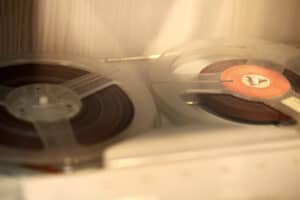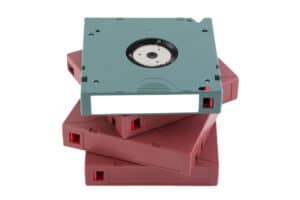
A new research report on the life expectancy of legacy audio tape was published last month. To me, it speaks to the reliability of tape technology, be it audio, video or data; vintage or modern day. It also reminds me of other research, stories, findings and updates from years gone by and more recently, that ultimately paint an impressive picture in terms of the reliability of tape technology.

A newly released research report entitled “Accelerated Aging of Polyester Based Legacy Audio Magnetic Tape Stock” published by the Council on Library and Information Resources, documents the results of a joint research effort between the Preservation Research and Testing Division of The Library of Congress and Fujifilm’s Recording Media Division.
The genesis of the research was a casual “what if” conversation between Library of Congress archivists and Fujifilm data storage team members at a symposium on long term data storage back in 2014. Fujifilm agreed to apply modern data tape testing techniques to vintage audio tape to help the Library develop a better understanding of the physical mechanisms through which magnetic audio tape degrades over time. This is an important issue for The Library as it holds a collection of over a half million audio recordings, much of it dating back to the 1970s and 1980s.
One of the main takeaways from this research conducted over many years at our data tape lab in Odawara, Japan
is that playable audio tape is not likely to degrade to an unplayable state for up to 100 years if stored at standard room temperature and humidity (68 – 75 degrees F, 30 -60% RH). Prior to this modern accelerated testing, the prevailing guidance was 10 to 30 years of life expectancy. Armed with the new information from this research, institutions involved in preservation of cultural heritage on magnetic tape can better plan how and when they need to migrate this content to modern digital tape formats such as LTO or IBM 3592.

The Library of Congress research reminded me of another study, this one undertaken by Professor Brian Weick, Ph.D., of The University of the Pacific. In 2015, Weick published a whitepaper entitled “Dimensional Stability of Magnetic Tape”. In this paper, Weick studied modern LTO data tape and found that dimensional stability goals of 30, 50 and even 100 years will be met if magnetic tape cartridges are stored at standard room temperature with low humidity. Tape technology can indeed survive long-term archival storage, noted Weick in this paper.

In 2019, Fujifilm and JEITA (Japan Electronics and Information Technology Industries Association) officially confirmed the longevity of Barium Ferrite magnetic signal strength to be stable for at least 50 years based on studies of LTO-7 tapes. The prevailing number of years for tape longevity had been 30 years. Barium Ferrite magnetic particles first appeared in LTO data tapes starting with Generation 6. In their research, Fujifilm and JEITA showed that Barium Ferrite was far more stable than legacy metal particle used up to LTO Generation 5 which exhibited some magnetic signal loss after 20 years in accelerated aging tests.
The sad tragedy of the Challenger disaster in 1986 was better understood thanks to tape technology reliability. The flight data recorders aboard Challenger used reel-to-reel tape at that time. After the Challenger disintegrated over the Atlantic Ocean, the flight data recorders and tape reels were recovered by Navy divers. However, the remains of the tape and reels were badly damaged from the explosion and badly corroded after being under 100 feet of seawater for six weeks. The remarkable story of how the flight data was recovered from the badly damaged tapes by a team of IBM scientists at the IBM Tucson lab is captured in a 2016 interview of Dr. Ric Bradshaw by Tom Gardner of the Computer History Museum.

A recent technical whitepaper issued by the LTO Consortium entitled LTO-9 Technology and User Data Reliability Analysis provides an in-depth analysis of the improving bit error rate of LTO tape technology. While Generation 8 bit error rate is at 1 X 1019, that is to say one uncorrectable error event in 1019 bits transferred, LTO-9 is actually 10X better at 1 X 1020. This number is 5 orders of magnitude better than typical 18TB HDD rated at 1 X 1015. To put this in context, one bit error can be expected in 125 TB of data read on HDD compared to just one-bit error in 12,500,000 TB of data read on LTO-9. Thanks to the team from HPE, IBM, Quantum and MIT for this detailed paper.
Presenting at Fujifilm’s 12th Annual Global IT Executive Summit was Nathan Thompson of Spectra Logic. Nathan Thompson is chairman of the board and chief executive officer of Spectra Logic. In a segment of his presentation, Nathan shared Spectra’s experience with tape reliability and the remarkable effectiveness of dual copy resulting in a “one in a billion chance” for data loss. Be sure to catch this brief video of Nathan’s conclusions below.
While users may not have the supporting ecosystem to read tapes that are 100 or even 50 years old, it’s nice to know that the archival integrity of the data on tape can be relied upon for at least decades to come. After all, organizations of all shapes and sizes have long-term data preservation requirements whether it is for compliance, analytics or other business reasons. In the case of The Library of Congress it’s about preserving our nation’s collective memory!
